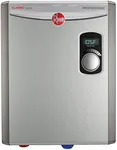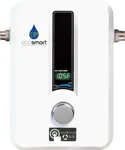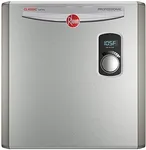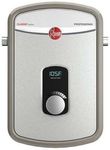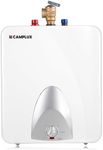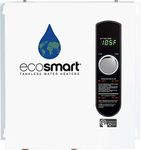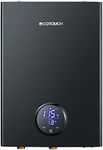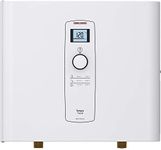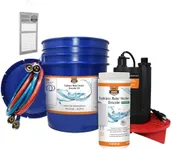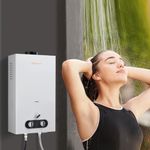Buying Guide for the Best Point Of Use Tankless Electric Hot Water Heaters
Choosing the right point-of-use tankless electric hot water heater can significantly improve your comfort and energy efficiency. These devices provide hot water on demand, eliminating the need for a storage tank and reducing energy waste. To find the best fit for your needs, it's important to understand the key specifications and how they relate to your specific requirements.Flow RateFlow rate, measured in gallons per minute (GPM), indicates how much hot water the heater can produce at a time. This is crucial because it determines whether the heater can meet your hot water demands. For instance, a flow rate of 1-2 GPM is suitable for a single sink, while 3-5 GPM can handle multiple fixtures like a shower and a sink simultaneously. Assess your household's hot water usage to choose a heater with an appropriate flow rate.
Power RatingThe power rating, measured in kilowatts (kW), indicates the heater's capacity to heat water. Higher power ratings mean the heater can heat water more quickly and to higher temperatures. For small applications like a single sink, a lower power rating (3-5 kW) is sufficient. For larger demands, such as multiple fixtures or a shower, you might need a unit with a higher power rating (6-12 kW). Consider your hot water needs and the electrical capacity of your home when selecting the power rating.
Temperature RiseTemperature rise refers to the increase in water temperature that the heater can achieve. This is important because it affects how hot the water will be when it reaches your tap. For example, if the incoming water temperature is 50°F and you need it to be 110°F, the heater must provide a 60°F temperature rise. Different models offer varying temperature rises, so choose one that matches your desired hot water temperature and the typical temperature of your incoming water.
Energy EfficiencyEnergy efficiency measures how effectively the heater converts electrical energy into hot water. Higher efficiency ratings mean lower energy consumption and reduced utility bills. Look for heaters with high energy efficiency ratings, typically expressed as a percentage. An efficiency rating of 90% or higher is considered very good. Consider your long-term energy savings when evaluating this specification.
Installation RequirementsInstallation requirements include the electrical specifications and space needed for the heater. Some units may require a dedicated circuit or specific voltage, which could affect your installation options. Additionally, consider the physical size of the unit and where it will be installed. Ensure you have the necessary electrical infrastructure and space to accommodate the heater. Consulting with a professional electrician can help you understand and meet these requirements.
WarrantyThe warranty provides an indication of the manufacturer's confidence in the product's durability and reliability. Longer warranties offer greater peace of mind and protection against potential issues. Warranties can range from 1 to 10 years or more. Consider how long you plan to use the heater and choose a model with a warranty that aligns with your expectations for product longevity and support.
